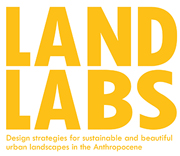
Porto
The city of Porto, with its deep historical roots and dynamic culture, is struggling with emerging climate vulnerabilities. Central to addressing this challenge is the revitalization of the Quinta de Salgueiros, a 6-hectare site envisioned to become a thriving urban native woodland. By integrating a variety of Nature-Based Solutions (NBS), the project aims to enhance the site’s resilience against climatic adversities such as intense heat and excessive rainfall. More than just an ecological intervention, the woodland is strategically positioned to connect two disparate city zones, fostering increased social cohesion and facilitating softer, more sustainable modes of transportation. The space will cater to the diverse needs of the community by providing opportunities for leisure, recreation, and sports amidst verdant surroundings. Adjacent to this burgeoning woodland, an urban watercourse presents an opportunity for rejuvenation and renaturalisation, adding ecological and aesthetic value to the landscape. While the project is rooted in Porto’s unique context, it holds broader implications for research through design (RtD) in landscape architecture. It provides a comprehensive model for urban revitalization that resonates with global sustainability goals, emphasizing the transformative potential of landscape architecture in shaping sustainable urban futures.
The city of Porto, with its deep historical roots and dynamic culture, is struggling with emerging climate vulnerabilities. Central to addressing this challenge is the revitalization of the Quinta de Salgueiros, a 6-hectare site envisioned to become a thriving urban native woodland. By integrating a variety of Nature-Based Solutions (NBS), the project aims to enhance the site’s resilience against climatic adversities such as intense heat and excessive rainfall. More than just an ecological intervention, the woodland is strategically positioned to connect two disparate city zones, fostering increased social cohesion and facilitating softer, more sustainable modes of transportation. The space will cater to the diverse needs of the community by providing opportunities for leisure, recreation, and sports amidst verdant surroundings. Adjacent to this burgeoning woodland, an urban watercourse presents an opportunity for rejuvenation and renaturalisation, adding ecological and aesthetic value to the landscape. While the project is rooted in Porto’s unique context, it holds broader implications for research through design (RtD) in landscape architecture. It provides a comprehensive model for urban revitalization that resonates with global sustainability goals, emphasizing the transformative potential of landscape architecture in shaping sustainable urban futures.










